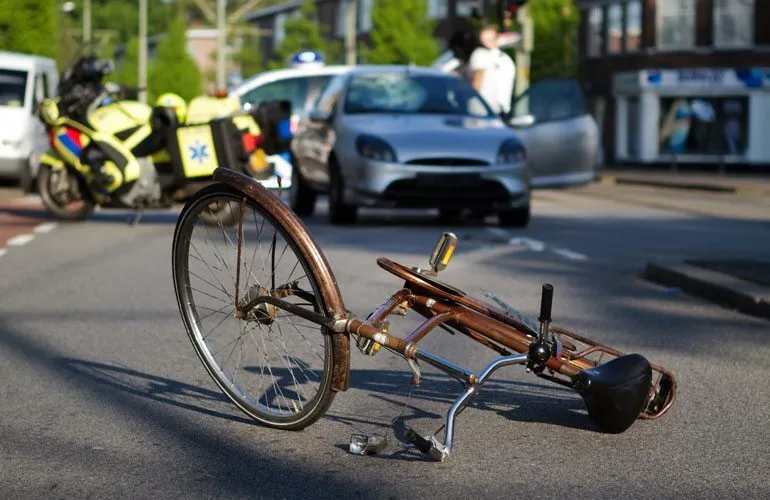Bicycle and Motorcycle Safety
- January 15, 2021 @ 3:34 pm
- Written by adminjbwp
- Categories: Accident | Bicycle Accidents | Motor Vehicle Accidents | Motorcycle Accidents

Bicycle Accidents
Hello, I’m attorney John Bales, and today I’d like to give you some Legal Insight into…bicycle safety. One of the ways Floridians enjoy our usually beautiful weather is to take a ride on a bicycle. Unfortunately, bicycling has become a rather dangerous activity in Tampa Bay. In just a four-month period in 2010, nine bicyclists were killed. Bicyclist must pay close attention to what is going on around them. Many times automobile drivers are not looking for bicycle riders.
When a bicyclist is hit by a car, it’s usually the fault of the automobile driver. Florida law is very specific concerning responsibility in a collision involving a car or any other motor vehicle and a bicycle. It requires that the person or company responsible for causing an accident pay for your injuries and bike repairs. Also, injured persons may be able to have a portion of their medical bills and lost wages paid with their insurance coverage. If you are in a Tampa Bay Florida bicycle accident, there are some things you should do at the scene.
First, call 9-1-1 and make sure you give as much comfort and aid as possible to all injured parties. Try to take photos of all injuries and the wrecked bicycle. Get the names, addresses and phone numbers of witnesses. Go to the hospital immediately if you think you are injured or in pain, or if emergency personnel or others at the scene think you should go. Seek treatment from a doctor or other health care provider of your choice immediately if you are hurt, in addition to going to the hospital. Inform your insurance company of the accident as soon as possible. Do not sign anything from an insurance adjuster.
Keep all records of the accident-related expenses. Unfortunately, many bicycle accident victims try to represent themselves when they seek compensation. They usually find they are unable to negotiate with the insurance company. It can be costly, time-consuming, and ultimately may even be fruitless. This is why accident victims need a good attorney. If you have any legal topic you want me to discuss here, please call me at 1-800-Call John or visit our web site, JohnBales dot-com and click on Legal Insight.
Motorcycle Accidents
During 2008, 5,290 motorcyclists were killed in fatal highway crashes across this country. This was the 11th straight year that the number of deaths from motorcycle crashes increased.
Motorcycles are vehicles with the same rights and privileges as any motor vehicles on the roadway. Unfortunately, there can be a bias against motorcyclists, assuming that they are usually at fault in accidents. Some automobile drivers struggle to understand the complexities of the operation of a motorcycle, lane positioning, the unique way a motorcycle reacts to steering and countersteering, throttle and braking inputs, as well as the special hazards faced by riders.
Automobile drivers should remember that road conditions that are minor annoyances to motorists can pose major hazards to motorcyclists. Motorcycle riders may change speed or adjust position within a lane suddenly in reaction to road and traffic conditions such as potholes, gravel, wet or slippery surfaces, pavement seams, railroad crossings, and grooved pavement.
Nearly half of all motorcycle crashes involve another motor vehicle. In approximately 40 percent of those crashes, a car was turning left while the motorcycles were going straight, passing, or overtaking the car. Automobile drivers should not be fooled by a flashing turn signal on a motorcycle – motorcycle signals may not be self-canceling and riders sometimes forget to turn them off. Wait to be sure the motorcycle is going to turn before you proceed. Riders need to make themselves visible and draw attention to themselves, but more importantly, other drivers should be actively looking for them on our roads. We should all “look twice, and save a life.”
For every 100 motorcycle riders that died in crashes while not wearing helmets, 37 of them could have been saved had all 100 worn helmets. 469 people were killed in Florida in motorcycle accidents in 2005. The number of deaths have steadily increased each year since Florida repealed its universal helmet law in July 2000. The National Highway Traffic Safety Administration found that in the three years following Florida’s decision to repeal its mandatory helmet law there were 933 motorcyclists killed. The number of Florida motorcycle deaths increased 81 percent, an increase from the 515 bikers killed from 1997 to 1999. While Florida law still requires helmet use by riders under 21, fatalities among that group nearly tripled in the three years after the repeal, and 45 percent of those killed were not wearing helmets as required by law.
Even if a motorcycle rider is not wearing a helmet, they still have the same rights as those that do. If someone else caused the motorcycle accident, the rider may bring a lawsuit for the injuries suffered and the damage to the bike. However, not wearing a helmet may make a difference in the amount of damages the rider will receive. Particularly, if it is shown that the rider’s failure to wear a helmet contributed to the injuries. This is specifically relevant to head injuries. If not wearing a helmet did not cause or aggravate the rider’s injuries, it may not make a difference. For example, if the rider’s injuries were limited to his legs, then wearing a helmet would not have affected the extent of the injuries. Florida is a comparative negligence state. This means that if the rider is partially at fault, she can still collect damages, but the award is reduced by the percentage of her comparative fault.
Riding a motorcycle is fun – a great way to enjoy a sunny day. Make sure it is a safe day by taking the precautions to protect yourself.
